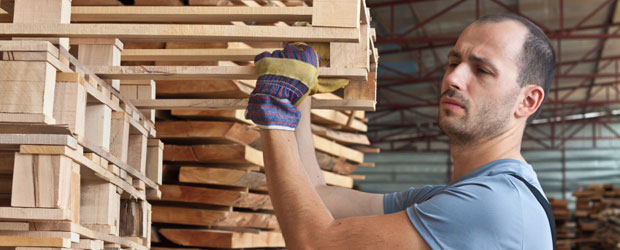The pallet remains the workhorse of the warehouse, so maximising its life will obviously save costs in terms of repair or replacement. The savings possible from increased pallet longevity, however, are much greater than this, due to the costs that damaged pallets inflict on the supply chain in terms of disruption, load damage and human injury.

Look after your pallets and they will look after you
A damaged pallet is nothing short of a liability in the modern distribution centre. Of course, plastic pallets and metal pallets are more difficult – though not impossible – to damage, so we are really talking about wooden pallets in this respect. Given that wooden pallets account for some 90% of those in circulation, increasing their longevity has a huge impact on costs in the supply chain by simply reducing the number of units companies need to purchase, rent or repair. However, there are many further reasons why it pays to protect your pallets. Firstly, as pallet damage often leads to product damage, protecting pallets means safeguarding goods, which may be extremely valuable. Secondly, employees can injure themselves on broken pallets or protruding nails, so pallet protection improves safety. Thirdly, there is a lower risk of contamination if pallets are in good shape, as damaged pallets can lead to stray chips, splinters or sawdust. Lastly, sound pallets reduce the risk of damage to machinery and equipment; in particular, automated warehouse systems are susceptible to jams resulting in costly downtime if pallets are not regular and sound.
"Things done well and with a care, exempt themselves from fear." William Shakespeare
How to avoid damage to a wooden pallet
The life of a wooden pallet depends greatly on its quality – how it was constructed and the standard of timber used. In other words, you get what you pay for. There are, however, a number of steps you can take to increase the longevity of your wooden pallets, whatever their initial quality.
The first point to note is that moisture is the enemy of the wooden pallet. Avoid damp environments and store pallets inside whenever possible. As well as degrading the timer over time, moisture can lead to mould growth. Take particular care when loading trailers to ensure there is no pooled water inside that the pallets will sit in for their onward journey.
The most significant impact on pallet life, however, comes from forklift damage. The answer here is to invest in driver training on how to handle pallets correctly. Drivers should take particular care on pallet entry to avoid hitting the pallet blocks with the forks. They should also slow down on entry to avoid slamming into the pallet. The forks should be as level as possible when entering the pallet, so that they don't puncture it, and operators must avoid 'short-forking' by ensuring that forks are inserted far enough that the pallet is fully on the forks. Once the load is on the forks, it should be tilted back slightly at an angle so that the pallet rests on the forklift mast. Pallet loads should never be pushed across the floor or rotated using the fork tines. When stacking pallets, this should be done neatly to minimise the risk of the stack toppling over or being caught by a passing forklift.
It may seem obvious, but you should take care to choose the right type of pallet for your application. Pallet suppliers are best placed to give advice in this respect. You should also try to purchase the best quality pallets you can afford, as this will pay dividends in the long run.
In addition, there are a number of products on the market that are specifically designed to protect pallets – such as plastic shields that screw onto the ends of a wooden pallet and forklift attachments that act as energy-absorbing bumpers.
If a wooden pallet becomes damaged, it can be refurbished to make it as good as new. Remanufactured pallets are significantly less expensive than new ones to buy. Once a pallet does come to the end of its useful life, however, it can be recycled into wood chips.
Like this guide?
Then why not check out our other guides from the blog

